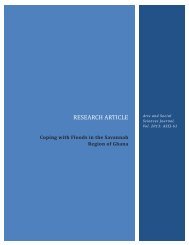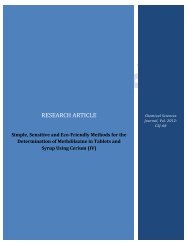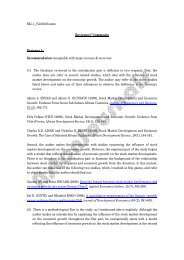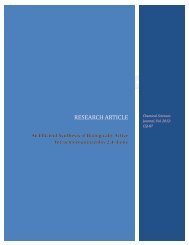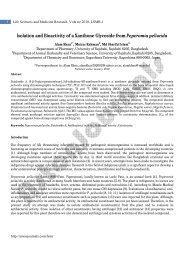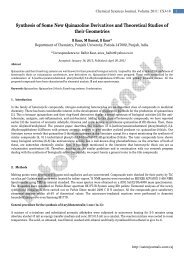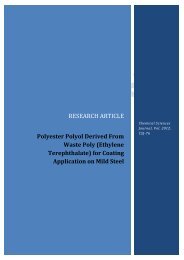Rapid and Sensitive Spectrophotometric ... - AstonJournals
Rapid and Sensitive Spectrophotometric ... - AstonJournals
Rapid and Sensitive Spectrophotometric ... - AstonJournals
Create successful ePaper yourself
Turn your PDF publications into a flip-book with our unique Google optimized e-Paper software.
Absorbance<br />
Absorbance<br />
8 Research Article<br />
0.6<br />
0.5<br />
PPL-BTB ion pair complex<br />
PPL-BTB blank<br />
PPL-BCG ion pair complex<br />
PPL-BCG blank<br />
PPL-BCP ion pair complex<br />
PPL-BCP blank<br />
0.4<br />
0.3<br />
0.2<br />
0.1<br />
0.0<br />
1,4-Dioxan Chloroform Acetonitrile Acetone Dichloromethane<br />
Solvents<br />
Figure 3: Effect of solvents on the formation of PPL-BTB complex (3.2 µg ml -1 PPL), PPL- BCG complex (4.0 µg ml -1<br />
PPL) <strong>and</strong> PPL-BCP complex (4.8 µg ml -1 PPL).<br />
3.1.3 Effect of dye concentration <strong>and</strong> reaction time<br />
The effect of the dye-concentration on the intensity of the color developed at selected wavelengths was studied by<br />
measuring the absorbance of solutions containing a fixed concentration of PPL (2.4, 3.5 <strong>and</strong> 5.0 μg ml -1 in methods<br />
A, B <strong>and</strong> C, respectively) <strong>and</strong> different amounts (0.5 - 3.0 ml) of the respective dye of 0.1% BTB solution, 0.05% BCG<br />
solution <strong>and</strong> 0.1 % BCP solution. Maximum color intensity of the complex was achieved with 1 ml of dye solutions<br />
in all the methods <strong>and</strong> an excess dye slightly decreases the absorbance of the complex (Figure 4). The addition of<br />
the dye solution resulted in an immediate color development at room temperature for method A <strong>and</strong> B, <strong>and</strong> takes<br />
5 min to develop color in method C. The formed ion-pairs were stable for at least 24 h in methods A <strong>and</strong> C <strong>and</strong> 90<br />
min in method B.<br />
0.45<br />
0.40<br />
0.35<br />
0.30<br />
BTB-PPL ion-pair complex<br />
Blank<br />
BCG-PPL ion-pair complex<br />
Blank<br />
BCP-PPL ion-pair complex<br />
Blank<br />
0.25<br />
0.20<br />
0.15<br />
0.10<br />
0.05<br />
0.00<br />
0.5 1.0 1.5 2.0 2.5 3.0<br />
Volume of reagent, ml<br />
Figure 4: Effect of reagent concentration on the formation PPL-BTB complex (2.4 µg ml -1 PPL), PPL-BCG complex<br />
(3.5 µg ml -1 PPL) <strong>and</strong> PPL-BCP complex (5.0 µg ml -1 PPL).<br />
http://astonjournals.com/csj



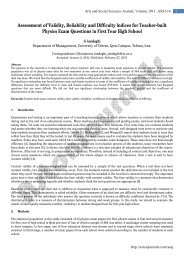
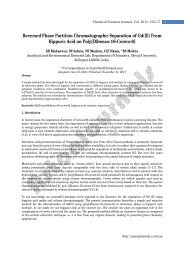
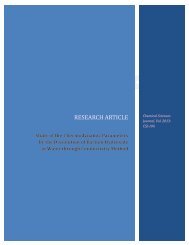
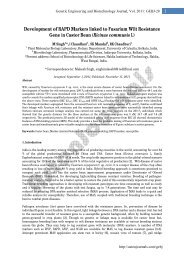

![[1,4]-benzodiazepine-2-one Derivatives as Potent - AstonJournals](https://img.yumpu.com/49117784/1/184x260/14-benzodiazepine-2-one-derivatives-as-potent-astonjournals.jpg?quality=85)
